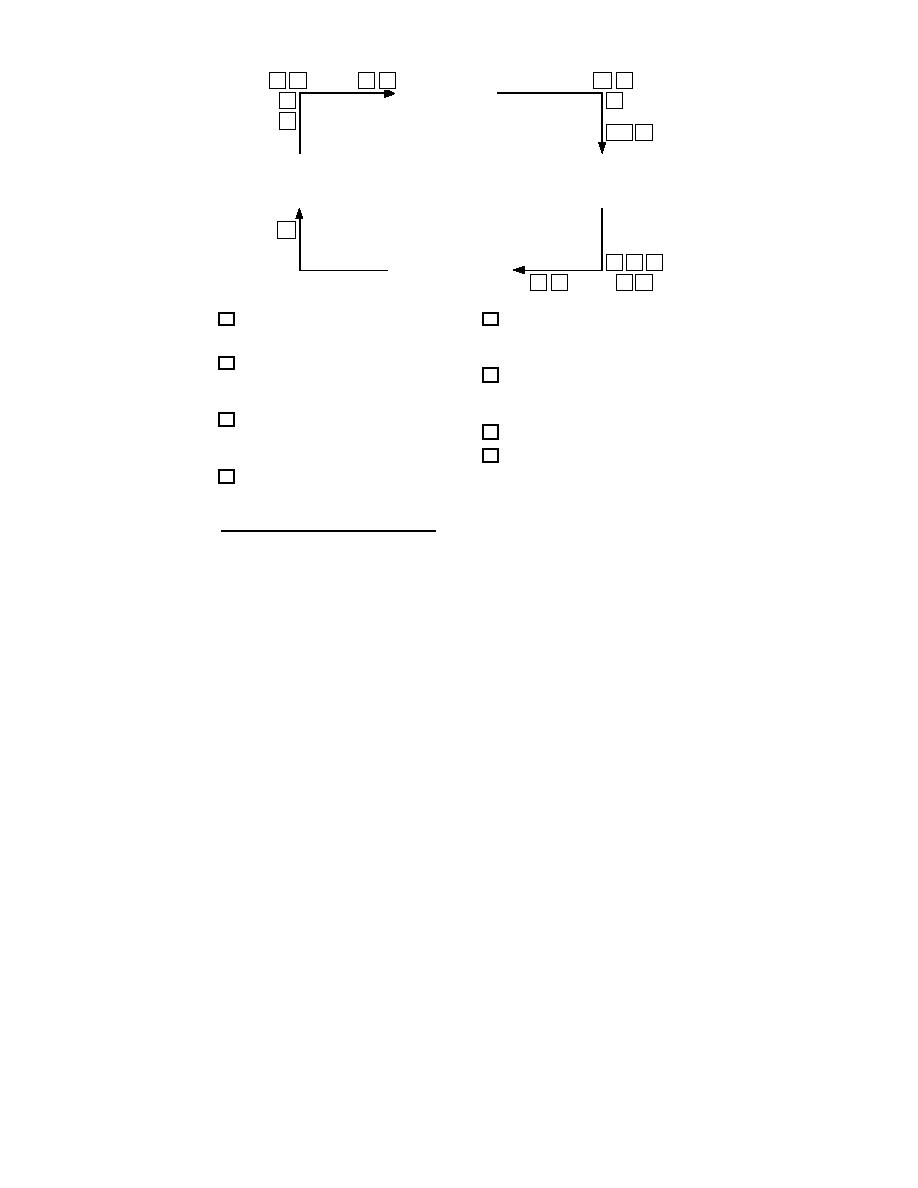
2
5
7
1
2**
5
FROZEN GROUND
6
6
8
3***
8
FALL FREEZING AND THAWING
SPRING THAWING AND FREEZING
(often begins when mean air
(often begins when mean air
temperature falls below 32 F
temperature rises above 32 F
for at least 5 successive days)
for at least 5 successive days)
4*
Soils Regaining Strength
2
4
5
as They Drain After
Last FTC (see Fig. 9)
1
8
6
7
Penetrometer measurements to define
FTC measured with buried thermistors
1
5
unconfined compressive strength of soils
and resistivity gages (Atkins 1979,
(strength decreases with increasing soil
1989, 1990)
moisture)
Observations of bank soilfailures;
2
estimates of volumes of failed soil;
Vane shear measurements to define
6
measurements of the thickness of
undrained shear strength of soils (shear
low-strength, surface soils
strengths decrease with increasing soil
moisture)
Frost depth estimated with Berggren
3
equation or measured with frost tubes
River/lake stage
7
(Rickard and Brown 1972) or buried
Bank shape measurements made by
thermistors/resistivity gages
8
erosion pins or bank profile surveys
Soil moisture measured with Hydra
4
(Gatto 1988)
Probe (Vitel, Inc. 1994) to correlate with
penetrometer and vane shear measure-
ments
*High antecedent soil moisture condition going into the fall can result in unusually low soil shear
strengths after thaw due to high ground ice buildup, thus soils could be more unstable and erodible
than under pre-fall soil moisture conditions.
** Maximum frost heave does not necessarily occur when frost depth is at a maximum (Jumikis 1962).
*** Maximum frost depth usually occurs later than the time of minimum air temperature; frost
penetrates sooner and leaves sooner in coarse-grained, non-plastic soils than in clayey soils
(Jumikis 1962).
Figure 13. Timing for field observations and measurements.
vations and measurements can be done to iden-
Bank site inventories
tify and monitor the effects of FTC on a bank. I
and surveys
One can map and inventory river and lake
propose that a procedure of year-round field mea-
banks with these characteristics and thereby iden-
surements and observations (Fig. 13) would pro-
tify those reaches where freezethaw processes
vide the data required to determine the amount
are likely to substantially contribute to bank erod-
of failed or weakened, highly erodible soil due to
ibility and instability. Such an inventory could
FTC and the amount of soil lost from a particu-
then be used to select the critical locations for
lar site.
which one can use laboratory tests (Chamberlain
1981, 1987) that include the effects of FTC in de-
Predictions of
termining frost, frost heave and thaw-weakening
FTC-weakened soil thickness
susceptibilities. However, no method is available
Finite-element models are available to predict
to predict where soil frost will form; variability in
the depth of frozen ground at a site where ground
the controlling factors is too great from year to
frost exists; however, the less-complicated, modi-
year to make such predictions meaningful.
fied Berggren equation given below has been used
However, once frost susceptibilities are deter-
for many years for such predictions on upland
mined for critical locations, repeated field obser-
terrain (Aitken and Berg 1968, Linell and Tedrow
13





 Previous Page
Previous Page
